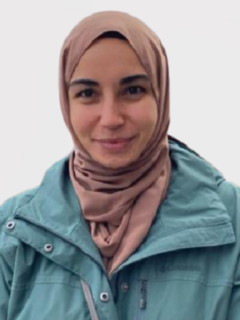Seyma Sereflioglu
Seyma Sereflioglu, M. Sc.
PhD student
Tendon repair approaches by biomolecule releasing electrospun scaffolds
Supervisor: Prof. Aldo R. Boccaccini (FAU), Prof. Nicholas Forsyth (Keele University)
In collaboration with Prof. Nicholas Forsyth, Keele University (UK), this project belongs to the Horizon 2020 “Perspectives for Future Innovation in Tendon Repair” (P4 FIT) European Joint Doctorate consortium (EU H2020-MCSA-ITN-EJD-2020). Tissue engineering mainly aims to create biological alternatives to tissues and organs and in this regard, scaffolding has a crucial role in the three-dimensional new tissue formation to mimic the native tissue [1]. One major challenge is the treatment of tendon injuries following acute trauma or physical strain due to the poor intrinsic healing capacity of tendon tissue [2]. Tendon tissue regeneration also needs structural support closely mimicking its native architecture which is composed of fibrous bundles and has anisotropic properties [1, 3]. In this context, the project aims to produce functionalized nanofiber scaffolds by combining electrospinning and layer-by-layer deposition of bioactive molecules and therapeutic nanoplatforms for tendon cure. The biocompatibility, teno-inductive potential, biomechanical functionality and therapeutic activity of the functionalized nanofiber scaffold will be investigated both in vitro and in vivo.
[1] Nivedhitha Sundaram, M. et al. (2019) ‘Chitosan hydrogel scaffold reinforced with twisted poly(L lactic acid) aligned microfibrous bundle to mimic tendon extracellular matrix’, International Journal of Biological Macromolecules. Elsevier B.V., 122, pp. 37–44. doi: 10.1016/j.ijbiomac.2018.10.151.
[2] Zhang, Y. J. et al. (2018) ‘Concise Review: Stem Cell Fate Guided By Bioactive Molecules for Tendon Regeneration’, Stem Cells Translational Medicine, 7(5), pp. 404–414. doi: 10.1002/sctm.17-0206.
[3] Ma, P. X. and Zhang, R. (2001) ‘Microtubular architecture of biodegradable polymer scaffolds’, Journal of Biomedical Materials Research, 56(4), pp. 469–477. doi: 10.1002/1097-4636(20010915)56:4<469::AID-JBM1118>3.0.CO;2-H.

